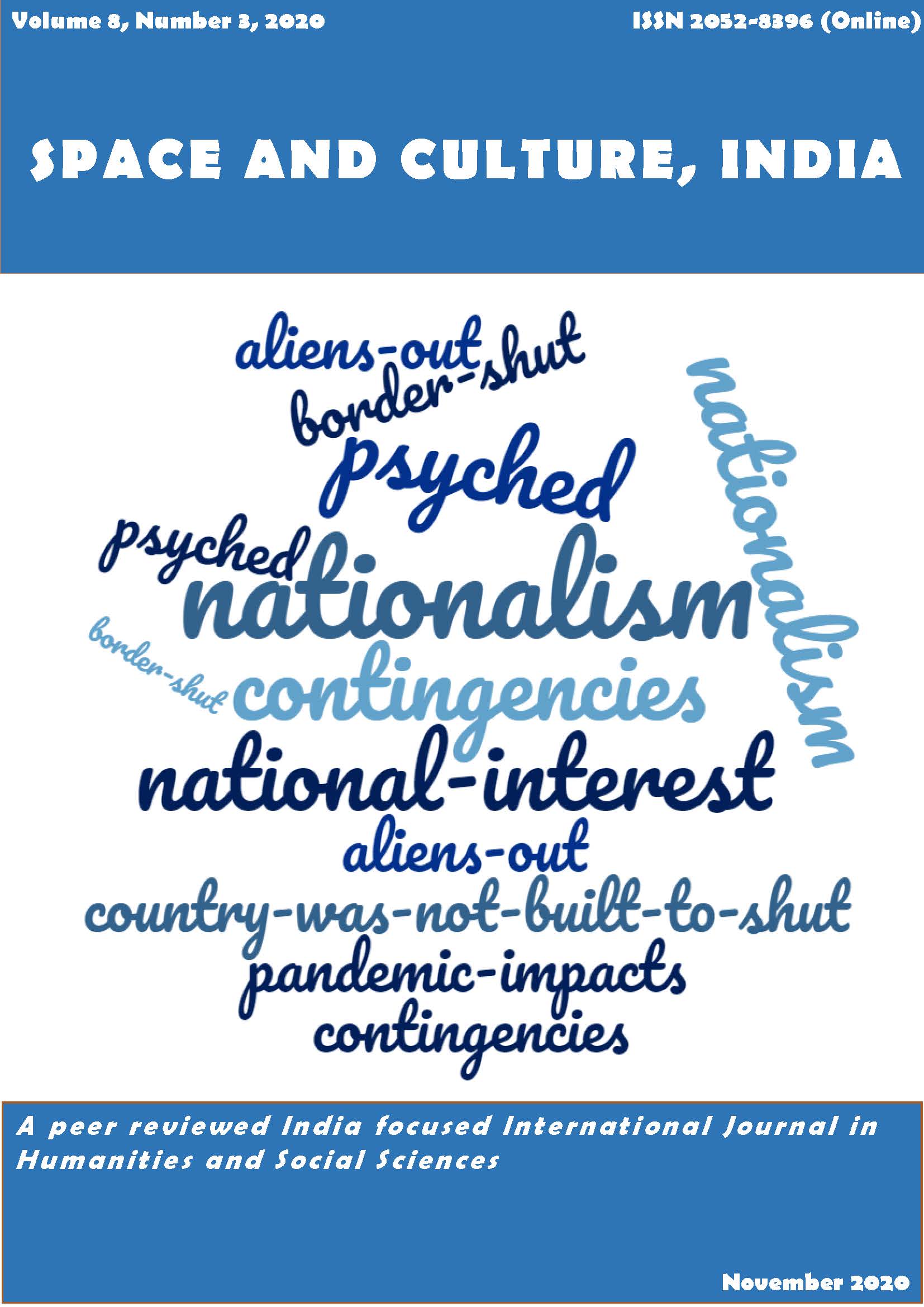The Uninhibited Evolution of the Human Persona: A Transhumanistic Study of Anil Menon’s The Beast with Nine Billion Feet

Abstract
Debates on intuition about transformed humankind in the future have led to the conception of transhumanism. It is a new philosophical movement to express the ideology that humanism will evolve by employing science and technology. Supporters of transhumanism believe that scientific aid in the evolution of humans will take them beyond the bounds of physical and mental limitations; eventually, it will make them immortals. The influence of transhumanism in literature has given birth to seminal works of art, particularly science fiction. Anil Menon’s The Beast with Nine Billion Feet is one such novel which sprang out the moral issues due to the rapid growth of science and technology affecting social, cultural, and political scenarios in India. The story is about genetic engineering and its impact on the socio-political problems. In addition to unfolding the threats and opportunities of transhumanism, the novel also touches on the issues of young adults like acquiring autonomy and finding their true identity. This study attempts to bring out the trepidation and chaos resultant of the period of transition and the multiple challenges and threats to the human race.
Keywords
Transhumanism, Evolution, Technology, Identity, Young Adults
Author Biography
Narendiran S
Research Scholar, SAS, Division of Social Sciences and Languages, Vellore Institute of Technology, Chennai , Vandalur – Kelambakkam Road, Chennai-600127, Tamilnadu, India
Bhuvaneswari R
Assistant Professor, SAS, Division of Social Sciences and Languages, Vellore Institute of Technology, Chennai , Vandalur – Kelambakkam Road, Chennai-600127, Tamilnadu, India
References
- Agar, N. (2007). Where to Transhumanism? The Literature Reaches a Critical Mass. Hastings Center Report, 37(3), 12-17. doi: 10.1353/hcr.2007.0034 DOI: https://doi.org/10.1353/hcr.2007.0034
- Alighieri, D. (2003). Divine Comedy. New York: Barnes and Noble Classics.
- de La Mettrie, J. O. (1912). Man a machine. Open Court.
- Dow, S., & Wright, C. (2010). Introduction: Towards a Psychoanalytic Reading of the Posthuman. Paragraph, 33(3), 299-317. doi: 10.3366/para.2010.0201 DOI: https://doi.org/10.3366/para.2010.0201
- Flanagan, V. (2014). Technology and Identity in Young Adult Fiction. London: Palgrave Macmillan.
- FM-2030. (1989). Are You A Transhuman?. New York, NY: Warner Books.
- Gelles, D. (2020). Immortality 2.0: A Silicon Valley Insider Looks at California’s Transhumanist Movement. https://web.archive.org/web/20120512223654/http://ce399eugenics.wordpress.com/2010/06/19/immortality-2-0-a-silicon-valley-insider-looks-at-californias-transhumanist-movement/
- Graham, E. (2002). 'Nietzsche Gets a Modem': Transhumanism and the Technological Sublime. Literature And Theology, 16(1), 65-80. doi: 10.1093/litthe/16.1.65 DOI: https://doi.org/10.1093/litthe/16.1.65
- Hayles, N. K. (1993). The Seductions of Cyberspace. In Conley, VerenaAndermatt (ed). Rethinking Technologies. University of Minnesota Press, pp. 173–190.
- Hughes, J. (2013). Transhumanism and Personal Identity. In More, M. and Vita-More (ed). The Transhumanist Reader: Classical and Contemporary Essays on the Science, Technology, and Philosophy of the Human Future.N.John Wiley & Sons, 227-233 DOI: https://doi.org/10.1002/9781118555927.ch23
- Huxley, J. (1967). Religion without Revelation. Watts.
- Menon, A., (2009). The Beast with Nine Billion Feet. Zubaan books.
- Mercer, C. (2014). Religion and Transhumanism: The Unknown Future of Human Enhancement, Praege.
- More, M. (1995). The Diachronic Self: Identity, Continuity, Transformation. A Bell& Howell Company. www.maxmore.com/disscont.htm
- More, M., & Vita-More, N. (Eds.). (2013). The Transhumanist Reader: Classical and Contemporary Essays on the Science, Technology, and Philosophy of the Human Future. John Wiley & Sons. DOI: https://doi.org/10.1002/9781118555927
- Transhumanism: into the future by the razor’s edge. Idea and prospects. — Steemit. (2019). https://steemit.com/science/@kuku12170/transhumanism-into-the-future-by-the-razor-s-edge-idea-and-prospects
- Zurr, I., & Catts, O. (2005). Big Pigs, Small Wings: On Genohype and Artistic Autonomy. Culture Machine. 7 https://culturemachine.net/biopolitics/big-pigs-small-wings/